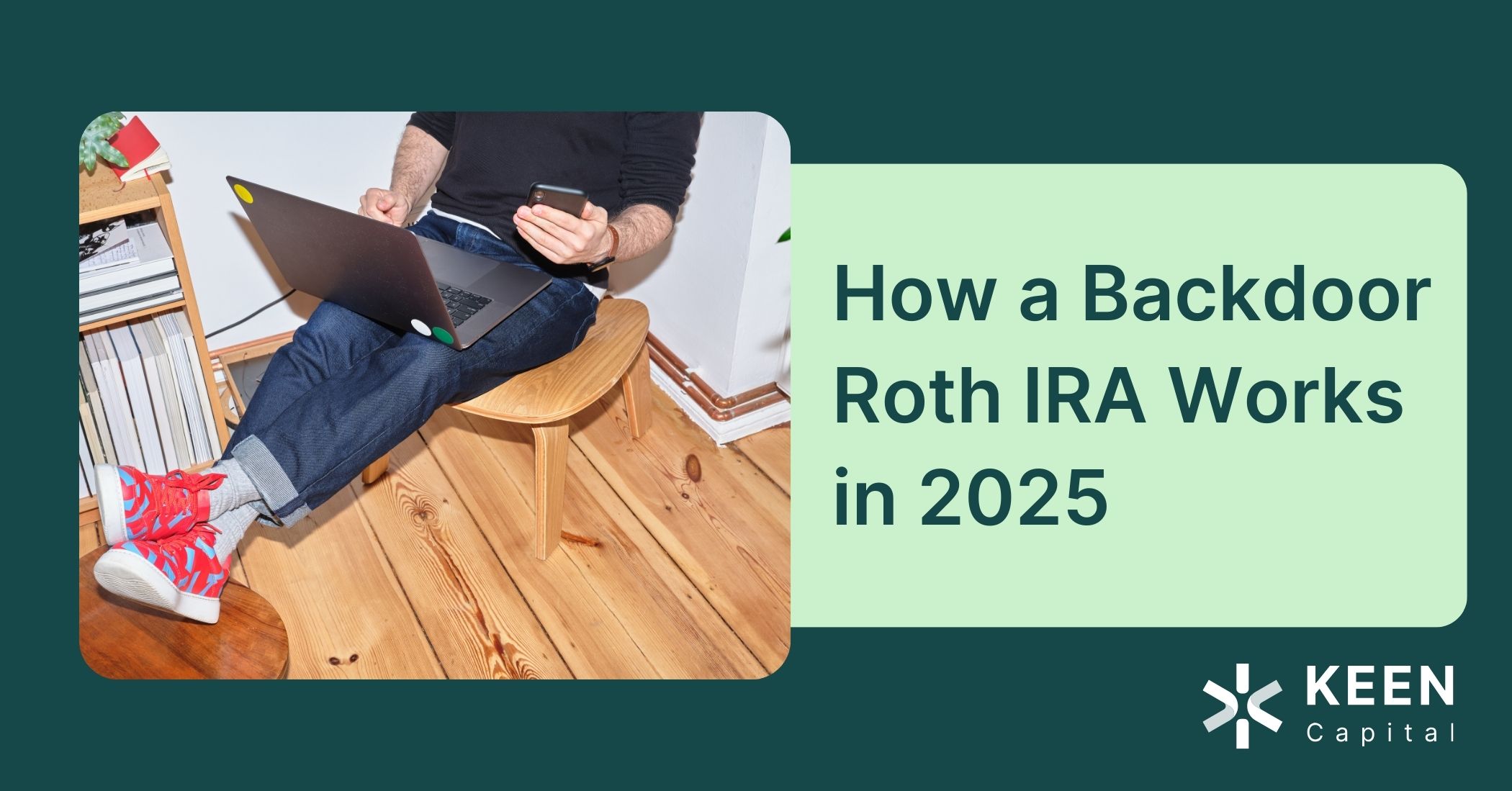If you make good money, there’s a weird catch when it comes to saving for retirement: you might not be allowed to put money into a Roth IRA.
That’s frustrating, because Roth IRAs are awesome. You deposit money after taxes, and it grows completely tax-free.
When you retire? You get to take it all out without paying another cent in taxes. That’s a great deal.
But if you earn too much, the IRS says nope—you’re not allowed to contribute directly.
So how do people get around that rule?
With a move called the Backdoor Roth IRA. It’s legal. It’s been around for years. And it’s surprisingly simple once you understand it.
Let’s break down how it works.
What’s the Problem?
If you make over a certain amount—about $161,000 if you’re single or $240,000 if you’re married (for 2025)—you’re not allowed to put money directly into a Roth IRA.
But there’s no rule that says you can’t:
- Put money into a Traditional IRA, and then
- Convert that money into a Roth IRA.
That’s the backdoor.
How to Do It (Step-by-Step)
Here’s what the Backdoor Roth IRA move looks like in plain English:
Step 1: Put money into a Traditional IRA
Even if you make a lot of money, you’re allowed to put $7,000 per year ($8,000 if you’re 50+) into a Traditional IRA.
Important: You won’t get a tax break for doing this—it’s called a “nondeductible contribution.” That’s fine. You’re just putting in after-tax money.
Step 2: Wait a little (usually a few days)
Let the money settle. Some people do the conversion right away, others wait a week or so. Either way is fine.
Step 3: Move that money into a Roth IRA
This is the “conversion” part. You tell your investment provider (like Fidelity, Vanguard, Schwab, etc.):
“Hey, I want to convert my Traditional IRA into a Roth.”
They’ll move the money over. Boom—now it’s in the Roth IRA.
Step 4: Invest it and let it grow
Once it’s in the Roth, you can invest it however you like—stocks, ETFs, whatever fits your plan. And from here on out, it grows tax-free.
When you retire, you can pull it out tax-free too.
Will I Owe Taxes When I Do This?
Usually not.
If you just put in the money and moved it over right away, you probably won’t owe anything because you already paid taxes on that money.
But… there’s a twist.
If you already have money in a Traditional IRA from the past, like from an old job’s 401(k) rollover, this gets messier. You might owe taxes on part of the conversion. It’s called the pro-rata rule, and it can trip people up.
Not sure if that applies to you? That’s a great time to call an advisor. We help clients with this all the time.
Why Bother With All This?
Because tax-free retirement money is a huge win.
Most retirement accounts—like a 401(k) or Traditional IRA—will hit you with taxes when you take the money out.
But a Roth?
Nope. You already paid taxes, so the withdrawals are free and clear.
This is a great addition to other buckets of money you are probably saving, including your 401k and taxable investments. Having funds across all of these buckets creates tax flexibility when it is time to take money out in retirement.
Final Thoughts
The Backdoor Roth IRA is one of those “not everyone knows this” strategies that can make a big difference over time, especially for high earners.
✅ It’s legal.
✅ It’s simple (once you know the steps).
✅ It helps you build tax-free money for retirement.
If you’re not sure whether it makes sense for your situation – or how to avoid the tax traps, let’s talk.
At KEEN Capital, we help clients use smart strategies like this to build the kind of retirement they want.
Head over to our Contact page to book your introductory call. We’re always here to help.
Until next time!



